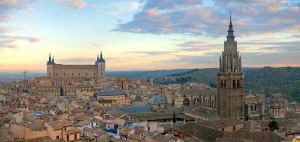Spain is a country that receives millions of tourists and thousands of Spanish students every year. All arrive with the intention to spend some days, some weeks or a year in our country while they enjoy the charms of all the beautiful spots in cities and villages.
Nevertheless, what most of them do not know is that Spain is the second country in the world with the biggest number of sites declared World Heritage by UNESCO, after Italy, even though Spain beats this country for tourism thanks to its beaches, climate and others charms.
The important historic, cultural, monumental and natural richness of Spain brought 52 sites to be declared World Heritage, as natural, cultural, mixed or intangible. Some of them are the Plaza Mayor de Salamanca, the Parque Nacional del Teide in Tenerife or the Flamenco danse, very typical to Andalusia.
In Spain there is an association formed in 1993, called “Ciudades Patrimonio de la Humanidad de España” (“Spain World Heritage Cities”), it consists of three cities whose historical monuments are on the UNESCO World Heritage list, with the aim to protect the cities’ heritage. The cities are Alcalá de Henares, Ávila, Cáceres, Córdoba, Cuenca, Ibiza, Mérida, Salamanca, San Cristobal de la Laguna, Segovia, Tarragona and Toledo.
A route through the World Heritage cities in Spain allows you to discover a bit more of the country and its culture, so if you are undertaking a course to learn Spanish in Spain we advise you to visit these magnificent cities.
Image Toledo. Diliff. http://goo.gl/5A6bs









